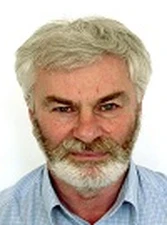Ernest Henry Rutter

The 2011 Louis Néel Medal is awarded to Ernest Henry Rutter for his major experimental and field contributions to our fundamental understanding of the deformation behaviour of the Earth’s lithosphere. In particular, his systematic laboratory studies have led to a greatly improved understanding of natural rock deformation.
Ernest Rutter has made major contributions to field structural geology and the physics of natural rock deformation over four decades. He richly deserves this recognition from the EGU. Ernie is first and foremost a structural geologist, and his early analysis of the rocks of the Ivrea zone framed the discussion of shear zones in the lower crust. These studies have provided important insights into the mechanical complexity of fault zones and the control of weak phases, such as clay and mica, on their strength. More recently, his work with Dan Faulkner in the Betic cordillera has contributed to our understanding of permeability variations across fault zones. This work demonstrated that anomalously high pore pressure in a fault core within a low permeability fault gouge could resolve the paradox of small earthquake stress drops measured from seismic parameters and large stress drops measured during rock friction experiments. While Ernie designed novel experimental apparatus and built a world-class laboratory to study rock deformation, it is clear that his laboratory studies have always been driven by his goal of understanding better natural rock deformation. He was one of the first people to point out the importance of the chemical effect of pore fluids on rock deformation when this was not widely acknowledged. His early papers on pressure solution and the chemical influence of water on time-dependent deformation are seminal and highly cited studies. Ernie was instrumental in elucidating almost all facets of the rheology of calcite rocks, including the mechanical and chemical effects of fluids, grain-size sensitive flow, pressure solution and mechanical twinning. His early studies of twinning are still used to interpret the kinematics of the stress states in naturally deformed rocks and his work on plastic flow of Carrara marble and Solnhofen limestones are considered benchmarks in geological rock mechanics. A similarly rigorous approach was adopted in the investigation of two problems that are very difficult to tackle experimentally: the hydro-mechanical coupling between metamorphism and mechanical deformation and the rheology of partially molten rock. All of these studies have been greatly strengthened by Ernie’s work on the connection between microstructures produced in the laboratory and those observed in naturally deformed rocks. This combination of rigour in integrating field observations with laboratory experiments is crucially important in Earth Sciences, but also very rare. It represents an outstanding achievement. Ernie Rutter therefore richly deserves the Neel Medal and the high honour that it represents.
